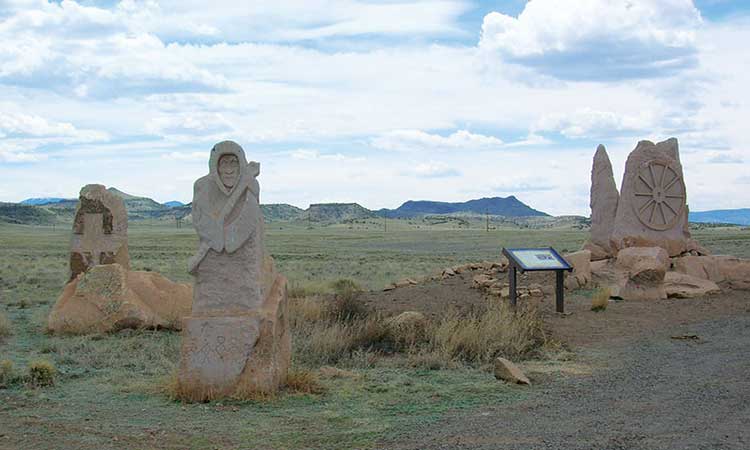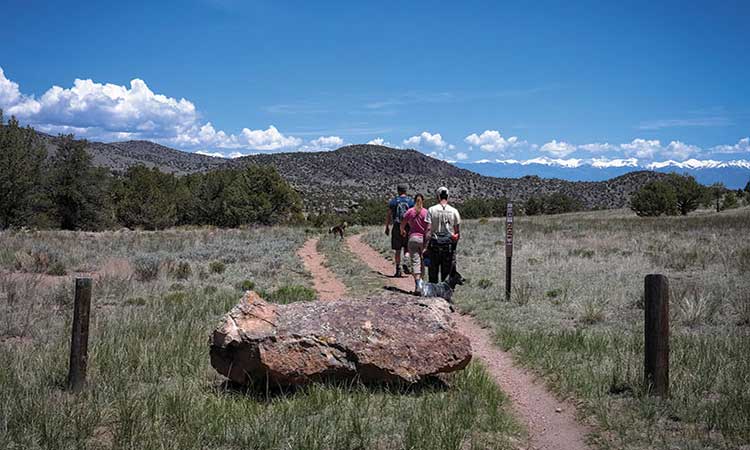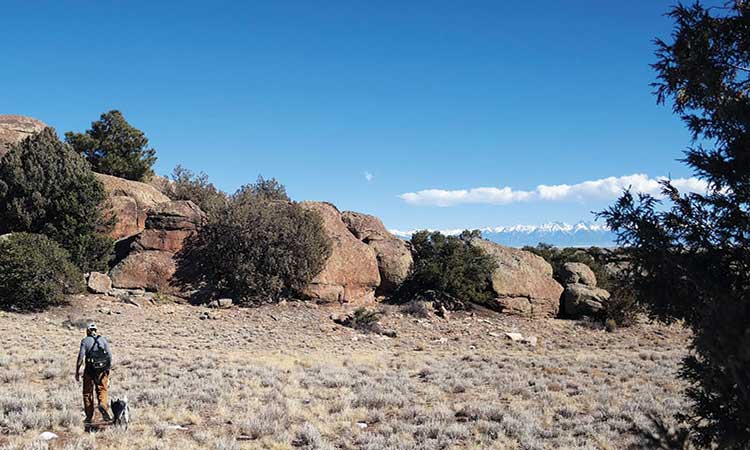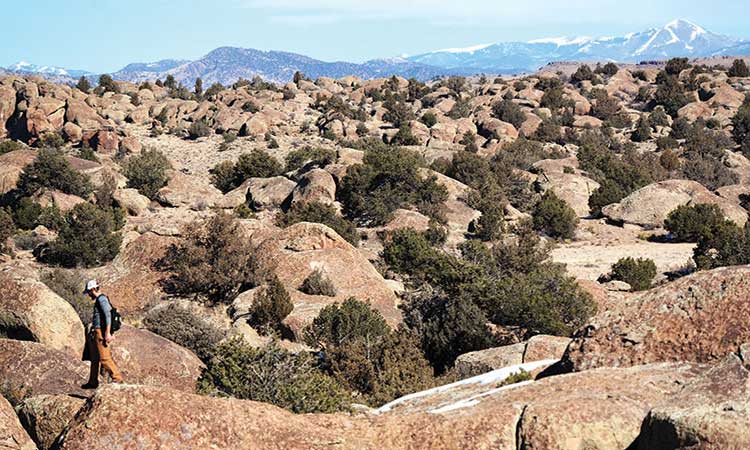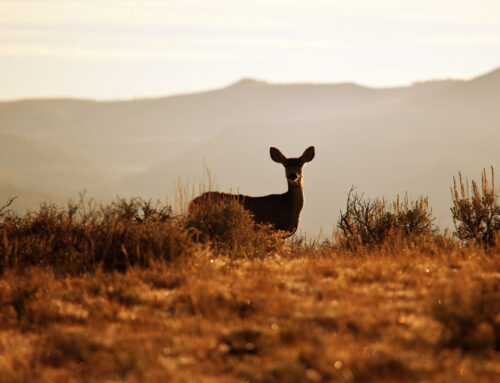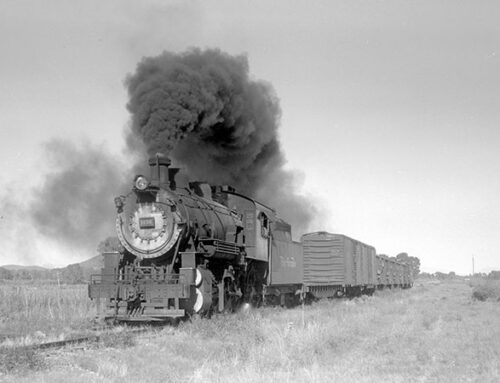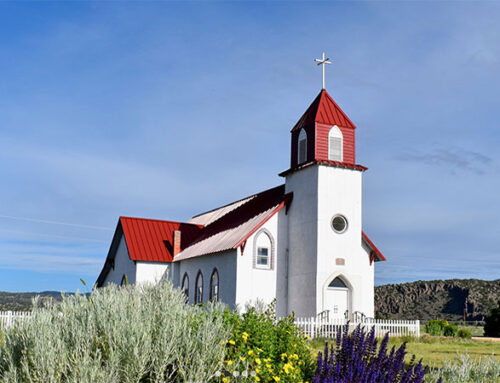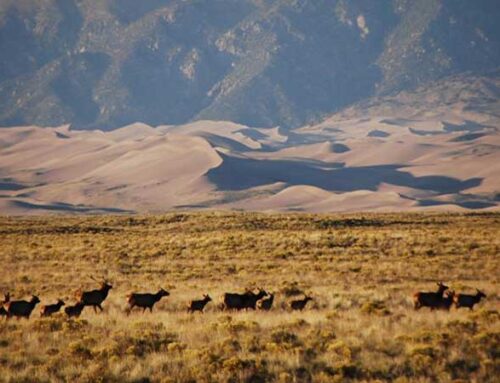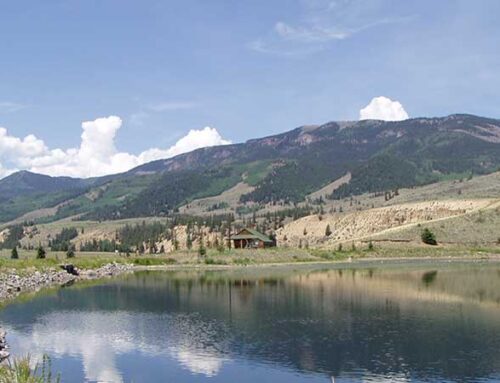Cultural History of the San Luis Valley
Article and Photos by Field Editor Ryan Michelle Scavo
The San Luis Valley has a long history of human habitation. From early native peoples and Spanish explorers to modern agricultural communities and new industries, the valley has long been a significant place of religious significance, recreation, farming and other forms of land use, and especially, exploration.
If you’re looking for opportunities to explore the history of this amazing and unique place, here are some places to consider:
Exploring the Old Spanish Trail:
The 2,700 miles long route is a historic trail utilized by early nomadic hunters and eventually, New Mexican traders traveling from Santa Fe, New Mexico to Los Angeles, California by mule and horse from 1829-1848. Portions of the North Branch, West Fork, and East Fork (now designated as a National Historic Trail) pass through the valley including the Crestone area and towns of Blanca, Saguache, and La Garita.
To explore an easily-accessible section of the trail on foot or bike, travel 6.5 west of the town of Monte Vista on Highway 160 and park at the trailhead/dirt parking area. This parking area/trailhead also features an interpretive marker and monument dedicated to the Old Spanish Trail. To learn more about the trail, visit the Bureau of Land Management website and the Old Spanish Trail Association website.
Native American Rock Art in Witches Canyon & Penitente Canyon Recreation Area
The area encompassing Witches Canyon and Penitente Canyon shares many stories of the early native people that inhabited the San Luis Valley and Spanish explorers that passed through the area. For the visitor seeking a glimpse of Native American rock art, consider a trip to Penitente Canyon.
The route leading north out of the town of Del Norte follows dirt county roads and traverses the boulder fields of Elephant Rocks with high peaks visible in the distance. Upon arriving at the main parking area in the canyon, visitors will immediately notice the uniqueness of this area – as it is like a gateway into an unexpected environment for this high alpine desert.
From the main parking area, the rock art panel is located nearby on the rocks directly to the left of the main trail entrance before the first junction. This site also features an informative wayside sign with more information about the panel.
Looking for more? Sites all across the canyon have hidden art among alcoves and canyon walls. Make your way to Witches Canyon and you might be lucky enough to view another panel in one of the many low-lying alcoves near the main trail.
Camping is also available in both Witches Canyon and along the access road to Penitente Canyon. For more information, visit the BLM website (Penitente Canyon Website)
Early Spanish Art of Penitente Canyon
For those of you continuing the hike through Penitente Canyon, turn right at the trail junction near the main parking area, pass the information bulletin board and make your way into the canyon to view the Virgin de Guadalupe. In addition to being along the Old Spanish Trail (see above), the canyon was considered a very spiritual place for early Spanish religious groups. Visible from the main trail and located just left of an existing climbing route, this painting is located high above the canyon floor on the right wall.
Something Extraordinary Around Every Turn
The San Luis Valley is a special place – from the cultures of the past to the people of today, this valley is unlike anywhere else in Colorado! To learn more about the Old Spanish Trail, rock art, valley history and other unique and interesting sites across the valley, visit the Rio Grande County Museum in the town of Del Norte or the Monte Vista Chamber of Commerce in downtown Monte Vista.



